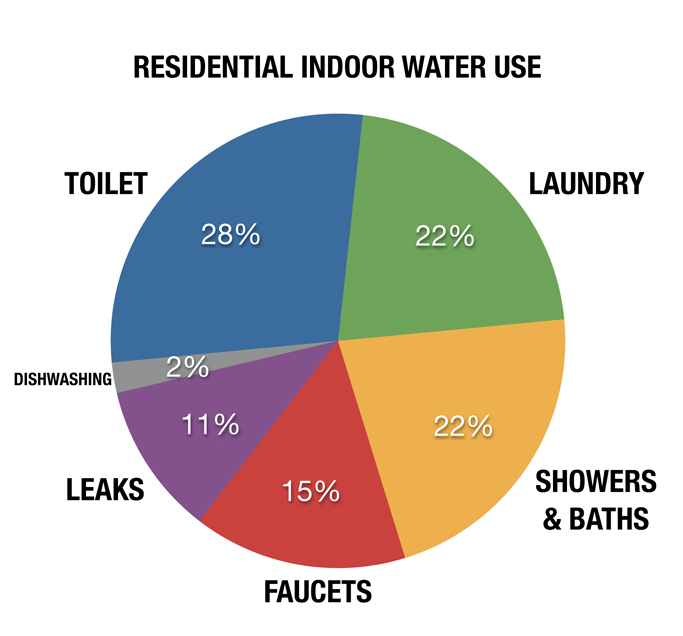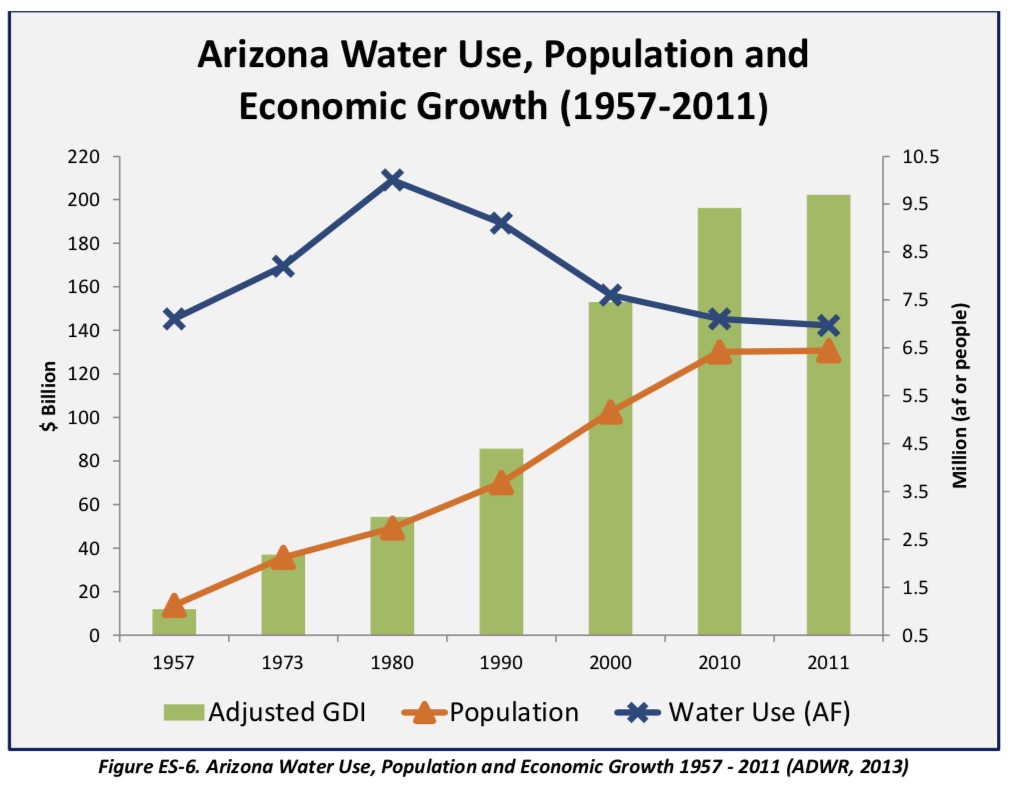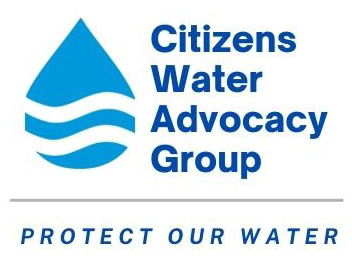Conservation
Graywater
Graywater is wastewater collected from the drains in your home. The Arizona Department of Environmental Quality (ADEQ) controls graywater use throughout the state. ADEQ rules state that graywater use is perfectly legal in rural and urban Arizona if a short list of best practices is followed: see this brochure. No city, town or county may limit the use of gray water if the use is permitted by ADEQ (ARS §49-204) EXCEPT for the Prescott AMA (PrAMA).
In general, graywater may be applied to ornamental landscapes and trees. It may not be sprayed with sprinklers or allowed to pond on the ground, and it cannot be used on edible plants. For complete guidelines, see this brochure.
By using graywater for ornamental landscapes instead of tap water, groundwater use is reduced. However, less wastewater is collected for reuse and recharge.
Graywater rules for PrAMA cities:
Prescott: Graywater use is not permitted.
Prescott Valley: No local restrictions on graywater use, but the town discourages the practice.
Chino Valley: (inquiry in progress)
Yavapai County: No restrictions.
Vendors for Landscaping and Native, Drought-Tolerant Plants
As a public service, CWAG lists vendors of drought tolerant plants and water saving landscape services. Disclaimer, CWAG does not endorse any commercial businesses. We also have a page of rainwater harvesting vendors.
Native Plants
Native Garden, 602 S Montezuma St, 928-237-5560, facebook.com/TheNativeGarden/, https://www.pinterest.com/pin/837458493196715478/
Mortimer Nursery & Landscape Co. 3166 Willow Creek Road, Prescott, AZ 86301, 3166 Willow Creek Road, Prescott, AZ 86301, 928-776-8000, https://mortimer-nursery.com/
We have a huge selection of native and drought tolerant plant material at Mortimer Nursery on Willow Creek Road in Prescott. Since our early days of the nursery we have embraced the concept of plants that require little to no additional water once established.
Watters Garden Center, 1815 W. Iron Springs Road, Prescott, AZ, 445-4159, WattersGardenCenter.com, facebook.com/wattersgardencenter/.
We sell native and low-water demand plants. See our book on Low Maintenance Landscapes: wattersgardencenter.com/the-
Prescott Valley Nursery, 6195 AZ-69, Prescott Valley, (928) 772-0878, prescottvalleynursery.com/
Highlands Center for Natural History, 1375 S Walker Rd holds a “Grow Native” Plant Sale the first weekend of May. For details, see highlandscenter.org/grow-native-plant-sale/
Yavapai County Cooperative Extension, 840 Rodeo Dr, #C, 445-6590, extension.arizona.edu/yavapai, Monsoon Madness Plant and Yard Sale the 2nd Saturday in July.
Landscaping
Manzanita Landscaping, Prescott, AZ 86302, 848-8025, manzanitalandscapinginc.com
We practice water efficient landscape use and can evaluate systems for efficiency and proper use. We also work directly with a rain water harvesting installer and can install artificial turf in lieu of regular turf.
Prescott Landscape Professionals, 928-830-3480, prescottlandscapeprofessionals.com
Rainwater harvesting, site containment, drought tolerant plants, xeriscape plantings, native seeding.
Jonny's Tree & Landscaping, 1038 Commerce Dr., 830-4977, jonnystreeandlandscaping.com/
We offer professional landscape services, saving water by installing a proper irrigation system with rain sensors. We have irrigation tech on staff and we offer rainwater harvesting installation designed by Barnabas Kane.
Vicente Landscaping, 2600 Stearman Rd, #C, Prescott, 636-1601, VicenteLandscaping.com.
Low water use irrigation systems, Xeriscape, planting and landscape maintenance service for your home or business.
Ariete Development, 602-935-1413 https://www.arietedevelopment.com/ 3298 N Glassford Hill Rd #104-11, Prescott Valley, Arizona, 86314. Permaculture earthworks, tree chipping and mulching, rain water harvesting, tree planting/ maintenance, irrigation installation, garden preparation.
Hacienda Del Ray Landscaping, Prescott Valley, 713-6333, haciendalandscaping.com. We specialize in synthetic turf and putting greens and low water use plants.
Landscape Now, Prescott Valley, 458-0425, landscapenowinc.com/
We install & Service low water use irrigation systems, install drought tolerant plants and design xeriscape landscapes.
List updated 12 Jul 23
Vendors: to have your business added to this list, send information to
Indoor Conservation

The strategy for indoor conservation is to first replace the water guzzlers. The top water consumption areas in average US homes are shown in the graph.
For ideas on replacing the toilet, laundry, faucets, and showerheads, look here. Note that dishwasher appliances are surprisingly efficient – much better than hand washing.
If you need to open the faucet and wait for hot water to flow out, consider installing a re-circulating hot water system.
Leaks should be ZERO: there is no excuse for leaks. For leak reduction tips look here.
The City of Prescott has rebates available for irrigation audits, rainwater harvesting, turf conversion, spray head upgrades, toilet and fixture upgrades, leak repair, and drip system conversions.
Wastewater
Wastewater
Virtually all of the water brought into your home is groundwater pumped from the Little Chino Aquifer, which is in overdraft. (link). It is possible to reduce groundwater pumping by reusing wastewater. So let's examine what happens to the groundwater used by urban and rural homes.
Landscape Water use:
Most urban and rural homes irrigate plants and lawns for seven months of the year. Irrigation water is either evaporated from the ground surface or transpired by plant leaves – this is lost water that does not return to the aquifer.
Urban Wastewater Use:
Water used inside urban homes is collected into the sewer and sent to the municipal wastewater treatment facility. Local cities treat their wastewater (effluent) to permit reuse and recycling. Some effluent is directly reused to irrigate golf courses; the remainder is allowed to recharge into the aquifer. In Prescott, about 55% of the groundwater pumped is recovered in the sewer. After treatment, 22% of groundwater pumped is directly reused on area golf courses, 28% of groundwater pumped is recharged (about 5% evaporates).
However, instead of dedicating the recharged water to the aquifer, Prescott, Prescott Valley, and Chino Valley use their recharge credits to maintain or increase groundwater pumping so there is no long-term benefit to the aquifer. Both Prescott and Prescott Valley use these recharge credits to support development. Furthermore, the recharge areas are far from the well fields, so there is no short-term benefit to the aquifer and water levels near the wells continue to fall. This is another reason why it is so important to conserve water used both inside and outside an urban home. Less water use in your home directly reduces groundwater pumping.
Rural Wastewater Use:
Rural homes obtain water from a domestic well and use a septic tank for on-site wastewater treatment. Effluent from the septic tank piped into an underground leach field to dispose of the wastewater. A significant portion of the septic effluent evaporates or is used by nearby trees and plants, so this is lost water. Some fraction of the septic effluent is recharged into the aquifer. The amount of recharge depends on the site and is impossible to determine precisely. The US Geological Survey uses a rough estimate of 35%, which is in the same ballpark as municipal recharge.
Because recharge is not very efficient in restoring groundwater, it is very important to conserve water used both inside and outside your home. Less water use in your home directly reduces pumping.
Barriers to Conservation
Water conservation has tremendous potential to reduce the stress on our rivers and to extend the lifetime of our water supply.
Unfortunately, this potential is not now being recognized. Everyone loves the idea, yet not enough is done to achieve a low water use community. Here are a few of the beliefs that inhibit aggressive water conservation:
-
Underestimating the Potential
Underestimating the Potential
Historically, water conservation programs have significantly reduced water consumption in Arizona. For example, ADWR has published this graph in 2012:

It is true that Arizona GDI (a measure of economic activity) and population have increased while total water use has decreased; the Prescott AMA has similar results. This shows that conservation works. We are concerned that some water managers may assume that further reductions are impractical. Actually these results represent only the "low hanging fruit." Much, much more must be done.
-
General resistance to change
General resistance to change
Change is difficult for everyone. Change is uncomfortable at first because it replaces comfortable and customary behaviors with uncertainty. Change requires new behaviors that seem initially unfamiliar.
-
Limits to educational/incentive programs
Limits to educational/incentive programs
Surveys of water user attitudes show that voluntary, educational strategies are acceptable and that mandatory programs are not wanted. Unfortunately, voluntary programs have limited effectiveness. Mandatory water conservation requirements are much more effective, but risk consumer dissatisfaction and complaints. Public officials avoid controversial regulations.
-
Concern that Conservation Supports Growth
Concern that Conservation Supports Growth
“Why should I scrimp so somebody else can move here?” When a city promotes conservation, citizens may cynically assume that the underlying reason is to facilitate growth. Local governments do promote growth, so this association is somewhat understandable.
For Prescott, conserved water facilitates the construction of new homes unless all the recovered wastewater is dedicated to permanent recharge which is currently a very small amount. Prescott Valley has a weak water conservation program, but conserved water does not support new construction. The difference lies in complex water regulations administered by ADWR.
